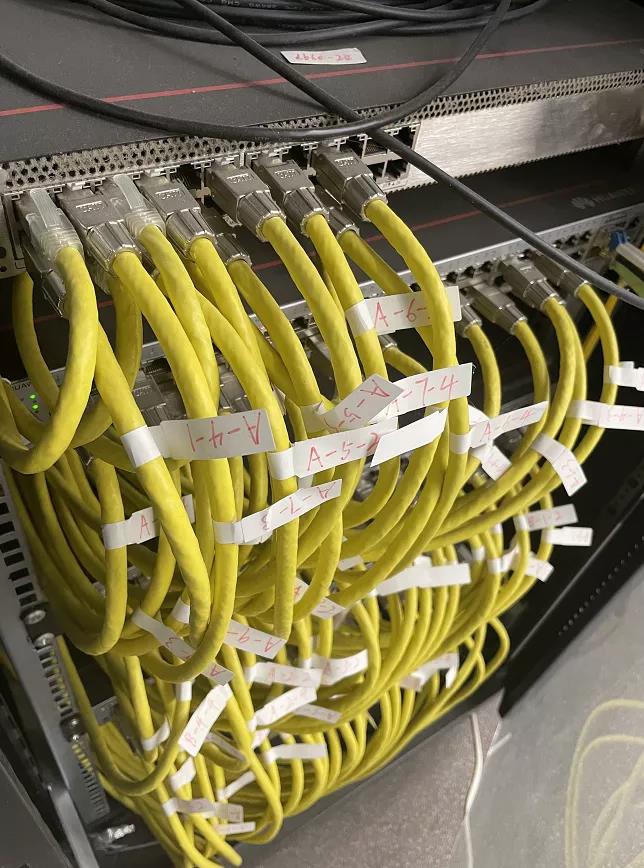Service hotline
+86 0755-83975897
Release date:2021-12-28Author source:KinghelmViews:1807
When we held the topic selection meeting a few days ago, several colleagues had a passionate discussion on the changes of data line interface in recent ten years.
Think about it. There are too many kinds of USB interfaces. From type A to micro B to type C, the USB interface will "evolve" every few years.

You should have seen these interfaces more or less, some on devices such as printers, some on early mobile phones or hard drives.
At first, the USB 1.0} bandwidth was only 1.5 Mbps, but later, the transmission speed was unable to cope with various larger and larger files, so we must find ways to improve its transmission speed.
From the official release of USB 1.0 in 1996 to the current type C, the transmission bandwidth can reach 10 Gbps. In more than 20 years, the USB interface has changed for several generations.
图片来源:电脑大咖 ▼

For example, when I was reading, my classmates often copied movies with my USB flash disk, which was still operated on the computer on the classroom podium. Every time, they had to find someone to watch the wind, because they had to pass it for several minutes. If they were caught by the teacher, there was no good juice to eat. Now, it's over in a few seconds.
At this time, I don't know which clever ghost in the corner asked, "ah, the USB interface transmission speed is so fast, why don't you get a USB port to replace the optical fiber?"
Yes, why has the data cable interface changed from generation to generation over the years, but no matter how the network cable changes, the crystal head with buckle always looks like that, but no one wants to change it?

To talk about this problem, we must first clarify a concept, that is, the difference between consumer products and engineering products.
The USB data interface is a consumer product, while the RJ45 specification interface on the network cable is an engineering product. In short, their application scenarios are different.
USB interface is mostly used in small mobile devices, which appeared after 1996.
The RJ45 interface standard was born in 1990 and has been used for more than 30 years now. Its initial application field is in various large servers and large equipment in the engineering field, which are purchased by large companies and enterprises.
These devices are not like mobile phones in your hand. They can be done with thousands of yuan. Their cost is very high. They can move tens of millions. Generally, they need to be used until the service life of the device expires.
This makes the RJ45 interface must be very "specific" and can not be moved casually.
If the network cable interface changes from RJ45 to USB, it means that the ports on these large devices should also be replaced with USB, and the original devices will be eliminated.

For another example, if you want to change the equipment of various large servers around the world, it will inevitably mean disconnecting the network connection.

For us living in modern times, microblog hanging can cause a great sensation. Can you imagine the disconnection of the network all over the country and even the world? Even a few seconds can cause huge losses.
So at the beginning of the popularity of the home network, the networking used telephone lines, which can also transmit data. The connector specification of the telephone line is RJ11, which is a little smaller than RJ45, but it can also be plugged into the RJ45 interface, but it has many disadvantages, such as slow transmission speed, and the line will be disconnected as soon as a call comes.

So don't look at the network cable. It's so worthless now. It's also a product of "technology decentralization". Compared with the consumer grade USB interface, RJ45 interface has many unique advantages.
For example, in terms of operability, we should have seen the assembly process of network cable when we decorate the network for new homes.
The installer took a pair of pliers, a crystal head and a wire. After playing with it, a network cable connector was pressed out. The whole process took less than a minute.

If the USB interface is replaced, do you want to bring raw materials to the site for welding one by one? You see, if those network engineers do it or not, you'll be done.
The second is reliability. There is a buckle on the back of the screen cable crystal head, and each wire has a corresponding small metal sheet pressing the wire.

This makes the stability of the network cable very high after it is inserted into the device to ensure that it will not fall off due to vibration and shaking. After all, the network cable does not need to be plugged in and out, while the data cable is different.
I don't know if you have ever experienced the falling of your notebook? You will find that the mouse cable and earphone cable are often easy to fall off, while the network cable generally does not have such a problem.
If you really fall off the network cable, I suggest you check your notebook first.
For another common example, our company's switches are like this ↓

If all these cables are replaced by USB, you can pull down a lot at random, and then you have to drill in and check them one by one.
Not to mention those larger switches and servers, which often have hundreds of network cables. If they are replaced with USB interfaces, the network equipment maintenance personnel basically don't want to get off work.
Then there is the difference in transmission distance.
The effective transmission distance of the network cable is 100 , M. if the network speed requirements are not harsh and can reach 200 , m, packet switching will be more serious.
What about USB? Five meters.

If you change the network cable to USB, you can't get through the network as long as your house is more than 5 meters away from the computer room.
Another is the most important transmission speed of the network cable.
The first home network cable was CAT-3 cable, which appeared in 1990. At that time, its maximum transmission speed could reach 10 Mbps, while USB 1.0, which appeared six years later, had a transmission speed of 1.5 Mbps.

The Gigabit network cables we commonly use now are super category 5 and category 6 cables. Super category 5 appeared in 2001, and the specification of category 6 cable was 2003.
Although the transmission speed of USB 3.0} interface suddenly came to 5 Gbps, it was in November 2008. Before that, the network cable speed was faster. Since I was faster, why should I change the USB interface.
Moreover, the transmission speed and stability of network cable are affected by materials. Whether it is super class 5 or class 6 cable, their crystal heads are the same in overall dimensions.
However, if you really want to say, there are still variants of the RJ45 standard crystal head shape. For example, there is a mini RJ45 network cable interface, which is equivalent to a hub. It is for professional purposes and can provide the MAC address of the computer. The scope of practical application is not large.

But now the notebook is getting thinner and thinner. Most manufacturers have removed the network cable interface.

From this point of view, we should all know why the network cable interface is not replaced by USB interface. In short, each type of interface is designed according to the needs. They have their own application scenarios, and there are many factors to be considered in the design.
This content comes from the Internet / Shichao. This website only provides reprint. The views, positions and technologies of this article have nothing to do with this website. If there is infringement, please contact us to delete it!










Copyright © Shenzhen Kinghelm Electronics Co., Ltd. all rights reservedYue ICP Bei No. 17113853